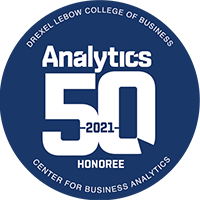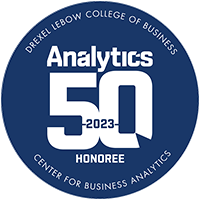If you have sensors, you have valuable data you may not be leveraging to its fullest potential.
From aircraft to wastewater treatment, sensors can provide valuable insight and Freya has the knowledge to unlock that data to save you money, time, and headaches. Sensors don’t care what industry you’re in and neither do Freya’s data scientists. We love the secrets that data holds and the challenges and opportunities it presents.
Do I contradict myself?
Very well then, I contradict myself.
(I am large, I contain Multitudes.)
Walt Whitman wrote that about himself in 1892, but he could have just as well have been writing about big data today. When analyzing data, you may think it’s telling you one thing, but in reality, it could be a completely different story than you thought. Data can be large, it can contain multitudes, but if you don’t have the right people and tools to help unlock it, the secrets it contains will remain just that, secrets. There can be so many stories in just one sensor, fiction, and non-fiction. Freya hunts for the truth to bring you the expertise and value you deserve.
Freya has had the opportunity to work a great deal in the aviation industry and hone our skills on mission-critical platforms. We have recently taken those skills and applied our data science methodologies to a regional water treatment facility.
Predictive Analytics Solutions in a Variety of Industries from Aircraft to Water Treatment
The analytical practice of trying to predict failures or search for optimization in a system can be transferred across domains and industries, as long as you have sensor data and design the solution properly. Condition based maintenance and anomaly detection algorithms can be implemented on ground vehicles, aircraft, pipelines, industrial machines, storage tanks, and more.
Regardless of industry, when sensor data exhibits strange behavior, it may be indicative of failure or induced failures. A well-placed sensor can give insight as to why costs have increased or how to optimize inputs or tackle system efficiency.
Freya has used sensor data to predict outcomes and/or improve the distribution of inputs in several different industries. To explain how it was accomplished and the similarities between the two domains, we aim to provide you with an understanding of how there is a universalism in predictive analytics and modeling.
Challenges in Aviation
In Aviation, Freya works with many aircraft sensors, most of which are vibration-based and designed to monitor how aircraft components wear. Although vibration data is the primary focus, other sensor data such as air speed, temperature, flight status, rotor speed, and torque can be analyzed as well.
Consistently, the same idea is present: the team is trying to predict failures before they occur from a multifaceted set of sensor data on the aircraft.
The sensor data is then analyzed to create a set of data patterns around failures.
These data patterns can then be scaled up to the fleet level to allow for monitoring of similar vibrational patterns, ultimately providing increased safety, security and minimized downtime for the platform. These processes and methodologies apply across domains.
Learn more about Freya’s Long Term Down aviation case study, which predicted aircraft downtime, resulting in more than an 8% increase in fleet availability.
No matter the domain, it can always be boiled down to this:
We are looking for data driven signals leading up to an event or non-event, respectively.
Challenges in the Waste Water Treatment Process
In Wastewater Treatment, the problem has similar characteristics in that data is coming from a sensor.
While in aviation, the team is often asked to predict failure events, in water treatment, the targets are often high-cost events or potential regulatory concerns.
In our Delcora Wastewater case study, the Freya team was focused on optimizing the operation of industrial blowers. Due to the inefficiencies in automation, the system would often trigger events where blowers were activated simultaneously for a short duration and then shut off because they weren’t necessary. The team was able to utilize data from a variety of sensors on blowers, valves, pressures, and dissolved oxygen to train an algorithm that was able to learn early warning signs of simultaneous blower events and alert plant operators to manually intervene. This prevented unnecessary costs and operations of the blowers.
In this instance, the team successfully tackled a myriad of sensor data types, and with the support of subject matter experts, adapted their thought process to build a solution.
The bottom line is, Freya loves data and the secrets it can hold. Not every problem is the same, but our enthusiasm always is. Sensors or data in general, regardless of application, produce information that can be interpreted into a pattern that ultimately describes an event. The event description can change, but as long as one understands how the sensor data relates to the environment one is working in, how it influences the event, and what the optimal outcomes are, the above skill sets can be transposed across industries.
Speak with a data scientist to learn about how you can optimize your own sensor data.
Our professional team would love to start the conversation about your predictive modeling needs. Contact us today!




